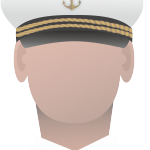
How to use the Toolkit?
1) Click on “Registration” and log in
2) On the “Main” page you can see several points that cover different topics in HWF planning
3) Read the background materials uploaded to the menu (“User manual”, final report at “Readings”)
4) Carefully read the general description of the Toolkit, Symbols and the Tool types in the “User manual” and at the “Toolkit” menu
5) Read the Recommendations, since they are interlinked with the tools
6) Set the date for your first self-evaluation and use the Toolkit annually/biannually to follow up the improvements (revision of the tools are first possible 3 months after the first completion of the Toolkit)
7) Start from the Introductory tool of “HWF Planning Pathway Model” and Captain Planning will guide you to the next steps
8) You can also pick one question on the “Main” page or at the “Toolkit” that matches your interest the best and browse within the tools
9) Complete the whole Toolkit and always save your scores at the bottom – otherwise your scores will be lost – then check your results at “My map”
10) Revise your previous scores annually/biannually and add your new ones after a developmental phase.
| Tools to improve HWF planning processes | Focus of the Tool | Target group
Technical experts |
Target group
Policy experts |
| Introductory Tool | The HWF Planning Pathway Model is a guideline that summarises general steps leading towards systematic HWF planning. | X | X |
| Tool1 | Evaluation list of Maturity level of systematic HWF planning provides a set of elements for systematic, and comprehensive HWF planning that could facilitate self-evaluation and additionally reveal areas for improvement and/or expansion. | X | |
| Tool2 | Information & Coordination Checklist enables special attention to be paid to information flow and communication management. | X | |
| Tool3 | Protocol for information flow and communication management supports the process of identifying and engaging stakeholders in the field of HWF planning and dedicates emphasis to information flow and communication management. | X | |
| Tool4 | The Optimal Skill List summarises the required/desirable core competences and fundamental skills for professionals/human resources engaging in HWF planning practice/performance. | X | |
| Tool5 | The Stakeholder coverage evaluation tool to carry out an evaluation of the national stakeholder network, to conduct analysis and ensure the setting up of collaboration by a national-level HWF planning network. | X | |
| Tool 6 | The Brief training outline to support the development of and/or close gaps in the skills and competences of the people responsible and involved in HWF planning (data providers and/or the members participating in the HWF Planning Committee). | X | X |
| Tools to improve HWF planning data | Focus of the Tool | Target group
Technical experts |
Target group
Policy experts |
| Tool7 | The Maturity level of HWF Planning Data Management Checklist could contribute to the optimisation of data management specifically for HWF planning data. | X | X |
| Tool8 | The Optimal Skill list for HWF planning data specialists is a list of the minimum skills and competences required for HWF planning. | X | X |
| Tool9 | The Database maintenance and development tool: PHASES of improvement and overcoming gaps regarding the “State of data” | X | X |
| Tool10 | The Guideline for selecting qualitative methods by rationales | X | X |

